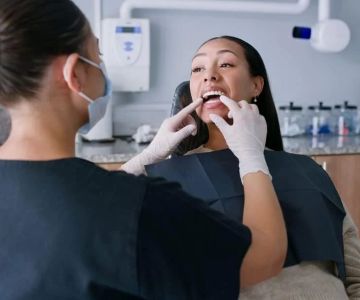How to Protect Your Enamel from Wear and Tear – Essential Tips for Strong Teeth
As someone who has always been concerned about my dental health, I’ve often wondered how to protect my teeth from the damage that can occur over time. One of the most important parts of our teeth is the enamel, which serves as the protective layer against decay and other issues. Over the years, I’ve learned how crucial it is to take steps to prevent enamel wear and tear. If you're like me and want to maintain your teeth in optimal condition, this article is for you. I’ll share the most effective ways to protect your enamel and maintain strong, healthy teeth for years to come.
1. Understanding Enamel Erosion and Its Causes
The first step in protecting your enamel is understanding what it is and what causes it to wear down. Enamel is the hard, outer layer of your teeth that provides protection from the everyday wear and tear caused by chewing, biting, and grinding. It’s the hardest substance in the human body, but it’s not invincible. Over time, factors like acidic foods and beverages, improper oral hygiene, and certain habits can cause enamel to erode.
For instance, I’ve learned that drinking sugary, carbonated, or acidic beverages—like soda or citrus juices—can contribute to enamel erosion. The acids in these drinks slowly break down the enamel, making teeth more susceptible to cavities and sensitivity. Additionally, habits like teeth grinding (often caused by stress) and brushing too aggressively with a hard-bristled toothbrush can speed up enamel wear. Understanding these risks was the first step I took in developing a strategy to protect my enamel.
2. Maintain Proper Oral Hygiene
One of the most important ways I protect my enamel is by practicing proper oral hygiene. Brushing and flossing daily are essential for maintaining strong teeth and preventing enamel erosion. However, I learned that it’s not just about brushing my teeth more frequently, but also about how I do it.
I started using a soft-bristled toothbrush, which is gentler on my enamel and gums. I also made sure to use fluoride toothpaste, which helps to strengthen enamel and prevent decay. Fluoride works by remineralizing enamel that may have been weakened by acids or bacteria in the mouth. Over the years, I’ve noticed that using fluoride toothpaste has helped keep my teeth strong and my enamel in good condition.
3. Choose the Right Foods and Drinks
As I mentioned earlier, the foods and drinks I consume play a huge role in the health of my enamel. Acidic and sugary foods, such as citrus fruits, soda, and candy, are particularly damaging to enamel. Over time, the acids can weaken enamel, making it more susceptible to wear and tear. I’ve been more mindful of my diet, choosing foods that are less likely to harm my enamel.
For instance, I now try to limit my intake of acidic beverages like coffee, citrus juices, and wine. Instead, I drink plenty of water throughout the day, which helps rinse away acids and bacteria in my mouth. I also found that chewing sugar-free gum can stimulate saliva production, which naturally helps neutralize acids and protect my enamel. In addition, I’ve made sure to include calcium-rich foods like dairy products, leafy greens, and almonds in my diet, as they help strengthen teeth and support enamel health.
4. Avoid Excessive Teeth Grinding
Teeth grinding, or bruxism, is a habit that many people, including myself, engage in—often without realizing it. Grinding your teeth, whether during the day or while you sleep, can cause significant damage to your enamel. Over time, this habit wears down the enamel, leading to sensitivity and potential tooth decay.
When I realized I was grinding my teeth at night, I spoke with my dentist about solutions. He recommended wearing a custom nightguard to protect my enamel from the effects of grinding. Nightguards are designed to cushion the teeth and prevent the surfaces from making direct contact with each other, reducing wear and tear. Since using a nightguard, I’ve noticed a significant decrease in tooth sensitivity and an improvement in the overall condition of my enamel.
5. Don’t Brush Immediately After Eating
One mistake I used to make was brushing my teeth immediately after eating acidic foods or drinks. I thought it would help clean my teeth and remove the acids, but I learned that this can actually harm my enamel. After consuming acidic foods, enamel becomes temporarily softened and more susceptible to damage from brushing.
Now, I wait at least 30 minutes after eating before brushing my teeth, allowing the enamel to re-harden. In the meantime, I rinse my mouth with water or chew sugar-free gum to help neutralize acids and reduce the risk of enamel erosion. This simple adjustment has helped protect my teeth from unnecessary wear and tear.
6. Regular Dental Checkups and Professional Advice
Throughout my journey of protecting my enamel, I’ve learned that regular dental checkups are essential. Visiting the dentist every six months allows me to catch any early signs of enamel erosion or other dental issues before they become serious problems. During these visits, my dentist can offer professional advice on maintaining strong enamel and may even recommend treatments like fluoride varnishes or sealants to provide extra protection.
I also appreciate how my dentist monitors the condition of my enamel and can suggest specific products or techniques tailored to my needs. For example, after noticing some slight signs of enamel wear, my dentist recommended switching to a toothpaste with more fluoride to strengthen my enamel further. This personalized care has been invaluable in helping me keep my teeth healthy and my enamel strong.
7. Consider Protective Dental Treatments
If you’re concerned about enamel wear, there are also several protective treatments available. For example, my dentist once recommended fluoride treatments that can be applied professionally during a dental visit. These treatments help remineralize enamel and protect against future erosion. I also learned that dental sealants—protective coatings applied to the back teeth—can provide an extra layer of protection against acids and bacteria.
While these treatments may not be necessary for everyone, they can be especially helpful if you’re at higher risk for enamel erosion, such as if you have a history of acid reflux, teeth grinding, or frequent consumption of acidic foods and drinks.
By following these steps and being mindful of my habits, I’ve been able to protect my enamel and maintain a healthy smile. I hope these tips help you do the same, so you can enjoy strong, beautiful teeth for years to come.
If you're looking for more personalized advice on protecting your enamel, visit Dentistry Toothtruth for expert guidance and dental care options.







 Westgate Dental Arts
Westgate Dental Arts Coventry Family Dental
Coventry Family Dental Familia Dental
Familia Dental Dr. Daniel S. Fife, DDS
Dr. Daniel S. Fife, DDS Dentistry At Suburban Square: Michael I. Wollock, DMD
Dentistry At Suburban Square: Michael I. Wollock, DMD Comfort Care Dental
Comfort Care Dental The Importance of Oral Health Education During Pregnancy for a Healthy Pregnancy
The Importance of Oral Health Education During Pregnancy for a Healthy Pregnancy Why Skipping Dental Checkups Can Lead to Bigger Oral Health Problems
Why Skipping Dental Checkups Can Lead to Bigger Oral Health Problems Advantages of Porcelain Dental Restorations
Advantages of Porcelain Dental Restorations Best Tips for Brushing Your Teeth Properly for Healthy Gums: Essential Techniques for Oral Health
Best Tips for Brushing Your Teeth Properly for Healthy Gums: Essential Techniques for Oral Health How Can Diabetes Cause Tooth and Gum Problems? Preventing and Managing Oral Health Issues
How Can Diabetes Cause Tooth and Gum Problems? Preventing and Managing Oral Health Issues Healthy Habits for Promoting Good Oral Health and Hygiene: Tips for a Healthy Smile
Healthy Habits for Promoting Good Oral Health and Hygiene: Tips for a Healthy Smile